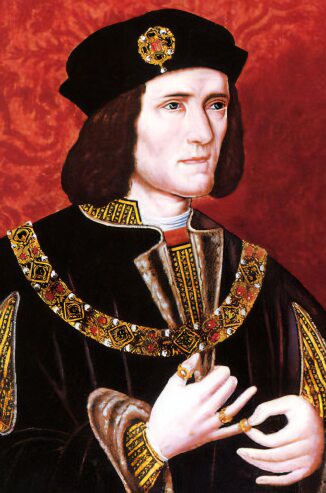[Image courtesy of Sarah Wendell.]



 Many castles in Scotland, England, France, Germany, and other European countries are up for sale these days as the costs for maintaining these edifices is constantly rising. However, a castle for sale rarely comes with its corresponding title. In this case, Fordyce Castle is accompanied by its barony title. A few years ago, I had visited Aberdeenshire. Pity I didn't venture out to see Fordyce.
Many castles in Scotland, England, France, Germany, and other European countries are up for sale these days as the costs for maintaining these edifices is constantly rising. However, a castle for sale rarely comes with its corresponding title. In this case, Fordyce Castle is accompanied by its barony title. A few years ago, I had visited Aberdeenshire. Pity I didn't venture out to see Fordyce. The castle in located in a village off the Banffshire coast in NE Scotland, 45 miles from Aberdeen airport. The L-shaped tower house has three floors with a corbelled stair tower, shot holes through which to fire upon besieging enemies, and with a nod to modernity indoor plumbing and under-floor heating. The castle itself and the cottages on the property have all been upgraded to four-star holiday accommodation as a bed and breakfast inn. It is said that it can be reverted partially or completely into a family estate.
The castle in located in a village off the Banffshire coast in NE Scotland, 45 miles from Aberdeen airport. The L-shaped tower house has three floors with a corbelled stair tower, shot holes through which to fire upon besieging enemies, and with a nod to modernity indoor plumbing and under-floor heating. The castle itself and the cottages on the property have all been upgraded to four-star holiday accommodation as a bed and breakfast inn. It is said that it can be reverted partially or completely into a family estate.
 "After the car park king comes the cemetery sovereign," famously says The Times. Scientists and historians claim to have found the remains of Alfred the Great, undoubtedly the greatest Anglo-Saxon king, buried in an unmarked grave in Winchester. Enthusiastic archelogists are seeking to excavate the grave at St. Bartholomew’s Church in Hampshire.
"After the car park king comes the cemetery sovereign," famously says The Times. Scientists and historians claim to have found the remains of Alfred the Great, undoubtedly the greatest Anglo-Saxon king, buried in an unmarked grave in Winchester. Enthusiastic archelogists are seeking to excavate the grave at St. Bartholomew’s Church in Hampshire.  "It's him!" And with that, the University of Leicester announced the discovery of King Richard III's bones on February 4, 2013. Following DNA and skeletal analysis and genealogical research, lead archaeologist Richard Buckley unambiguously proclaimed that the skeleton discovered under a council car park in Leicester was indeed that of the last Plantagenet medieval king Richard III.
"It's him!" And with that, the University of Leicester announced the discovery of King Richard III's bones on February 4, 2013. Following DNA and skeletal analysis and genealogical research, lead archaeologist Richard Buckley unambiguously proclaimed that the skeleton discovered under a council car park in Leicester was indeed that of the last Plantagenet medieval king Richard III.  The Richard III Society, working with the University of Dundee, undertook the task of reconstructing Richard's face from the remains. Caroline Wilkinson, Professor of Craniofacial Identification, said, "His facial structure was produced using a scientific approach, based on anatomical assessment and interpretation, and a 3-D replication process known as stereolithography. The final head was painted and textured with glass eyes and a wig, using the portraits as reference, to create a realistic and regal appearance." Janice Aitken, a lecturer at Duncan of Jordanstone College of Art & Design, painted the 3-D replica of the head, that Professor Wilkinson created, using protrait painting techniques combined with historical and contemporary references.
The Richard III Society, working with the University of Dundee, undertook the task of reconstructing Richard's face from the remains. Caroline Wilkinson, Professor of Craniofacial Identification, said, "His facial structure was produced using a scientific approach, based on anatomical assessment and interpretation, and a 3-D replication process known as stereolithography. The final head was painted and textured with glass eyes and a wig, using the portraits as reference, to create a realistic and regal appearance." Janice Aitken, a lecturer at Duncan of Jordanstone College of Art & Design, painted the 3-D replica of the head, that Professor Wilkinson created, using protrait painting techniques combined with historical and contemporary references.  This post will cover Canute, the 11th century Anglo-Saxon king. According to the Medieval News, forensic scientists will examine "the skeletal remains of Anglo-Saxon royalty that have lain in wooden ‘mortuary chests’ at Winchester Cathedral for more than 350 years." According to the Daily Mail, "the [mortuary] chests have been placed in the Lady Chapel to allow researchers to begin examinations without removing them from consecrated ground." Detective archaeologists from Bristol University will use DNA techniques to identify the remains. The remains of some of the Anglo-Saxon royalty were originally buried at Winchester Cathedral, but their remains were scattered by looters who ransacked it during England's Civil War. They were then willy-nilly stuffed into these chests and reburied at the cathedral.
This post will cover Canute, the 11th century Anglo-Saxon king. According to the Medieval News, forensic scientists will examine "the skeletal remains of Anglo-Saxon royalty that have lain in wooden ‘mortuary chests’ at Winchester Cathedral for more than 350 years." According to the Daily Mail, "the [mortuary] chests have been placed in the Lady Chapel to allow researchers to begin examinations without removing them from consecrated ground." Detective archaeologists from Bristol University will use DNA techniques to identify the remains. The remains of some of the Anglo-Saxon royalty were originally buried at Winchester Cathedral, but their remains were scattered by looters who ransacked it during England's Civil War. They were then willy-nilly stuffed into these chests and reburied at the cathedral. 